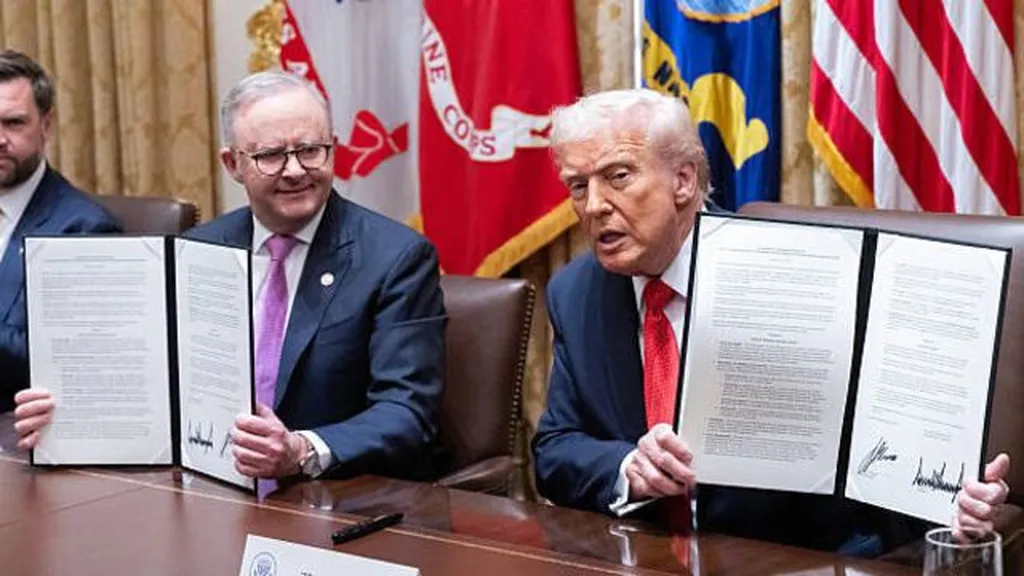Australian Prime Minister Anthony Albanese’s visit to the White House has underscored a transactional approach to international relations, one that aligns closely with Donald Trump’s economic and strategic priorities. The flurry of agreements signed between the two leaders spans critical minerals, defence, and technology, marking a significant step in bilateral cooperation while reinforcing America’s own interests.
The most immediate and impactful deal centres on critical minerals, a sector where China currently dominates with 90% of the global refined supply. In response to Beijing’s recent export restrictions, the US and Australia have committed to investing US$1 billion each over the next six months to develop priority projects. This move is a direct counter to China’s tightening grip on the market and a strategic effort to secure supply chains for advanced weaponry, semiconductors, and electric vehicles.
“In about a year from now, we’ll have so much critical mineral and rare earths that you won’t know what to do with them,” Trump told reporters, signalling confidence in the new framework. Key projects include Alcoa’s gallium plant in Western Australia, a joint venture between the US, Australia, and Japan, and the Arafura Rare Earth’s Nolans project in the Northern Territory, which has received a $153 million stake from the Albanese government. Additional ventures span rare earths and graphite mines across Australia, supported by US Export-Import Bank Letters of Interest worth US$2.2 billion.
Defence cooperation was another major focus, with Australia committing to “enhanced burden sharing” in response to Trump’s call for Western allies to counter China’s military expansion. The White House highlighted Australia’s recent defence investments, including a US$1.1 billion purchase of “Ghost Shark” autonomous undersea drones and a US$2.9 billion contract for Apache attack helicopters. The AUKUS pact, which Trump declared is “going full steam ahead,” was also reinforced, along with Australia’s investments in US shipbuilding facilities. Additionally, the Joint Air Battle Management System and domestic munitions manufacturing initiatives were emphasised, both of which rely heavily on US industry involvement.
The third agreement established a “historic partnership” to promote economic prosperity and technology collaboration. Central to this initiative is an aspiration for Australia’s superannuation funds to increase investments in the US to US$1.4 trillion by 2035, a move expected to create tens of thousands of high-paying American jobs. A new pact between NASA and the Australian Space Agency was also signed, focusing on lunar rover technology to support the US Moon mission. Furthermore, the two governments agreed to develop a “Technology Prosperity Deal” to jointly invest in AI, quantum computing, and other emerging technologies.
Albanese’s transactional diplomacy has clearly resonated with the Trump Administration, which framed the agreements as a strategic win for both nations. As geopolitical tensions rise, these deals not only strengthen bilateral ties but also position Australia as a key player in global supply chains and defence alliances. The focus on critical minerals, defence cooperation, and technology investment signals a broader shift in how nations are navigating an increasingly complex security and economic landscape.

